 W
WIgnacio Manuel Altamirano Basilio was a Mexican radical liberal writer, journalist, teacher and politician. He wrote Clemencia (1869), which is often considered to be the first modern Mexican novel.
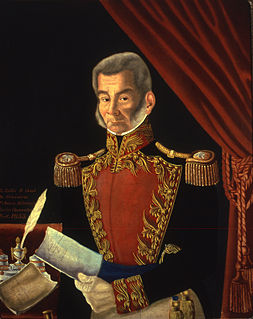 W
WJuan Nepomuceno Álvarez Hurtado de Luna, generally known as Juan Álvarez, was a general, long-time caudillo in southern Mexico, and interim president of Mexico for two months in 1855, following the liberals ouster of Antonio López de Santa Anna. Álvarez had risen to power in the Tierra Caliente, in southern Mexico with the support of indigenous peasants whose lands he protected. He fought along with heroes of the insurgency, José María Morelos and Vicente Guerrero in the War of Independence, and went on to fight in all the major wars of his day, from the "Pastry War", to the Mexican–American War, and the War of the Reform to the war against the French Intervention. A liberal reformer, a republican and a federalist, he was the leader of a revolution in support of the Plan de Ayutla in 1854, which led to the deposition of Santa Anna from power and the beginning of the political era in Mexico's history known as the Liberal Reform. According to historian Peter Guardino: "Álvarez was most important as a champion of the incorporation of Mexico's peasant masses into the polity of [Mexico] ... advocating universal male suffrage and municipal autonomy."
 W
WJosé Ponciano Arriaga Mejía (1811–1865) was a lawyer and radical liberal politician from the Mexican state of San Luis Potosí.
 W
WJosé María Jesús Carbajal (1809–1874) was a Mexican Tejano who opposed the Centralist government installed by Antonio López de Santa Anna, but was a conscientious objector who refused to take up arms against his own people. Mexican conscientious objectors paid a price for their refusals, in that Texan Brigadier General Thomas Jefferson Rusk confiscated the homes of those who wished to remain neutral in the war. In July 1836, Rusk ordered the Carbajal and other Tejano families of Victoria escorted off their own land. They took refuge in New Orleans.
 W
WMartín Carrera Sabat was a Mexican general, senator, and interim president of the country for about a month in 1855. He was a moderate Liberal. His family still influences Mexican politics, and some of his grandsons, were revolutionaries in the Mexican Revolution.
 W
WThe Científicos were a circle of technocratic advisors to President of Mexico Porfirio Díaz. Steeped in the positivist "scientific politics", they functioned as part of his program of modernization at the start of the 20th century.
 W
WIgnacio Gregorio Comonfort de los Ríos, known as Ignacio Comonfort, was a Mexican politician and soldier. He became President of Mexico in 1855 after the outbreak of the Revolution of Ayutla that overthrew Santa Anna.
 W
WRamón Corona was a liberal Mexican general and diplomat.
 W
WJuan Nepomuceno Cortina Goseacochea, also known by his nicknames Cheno Cortina, the Red Robber of the Rio Grande and the Rio Grande Robin Hood, was a Mexican rancher, politician, military leader, outlaw and folk hero. He was an important caudillo, military general and regional leader, who effectively controlled the Mexican state of Tamaulipas as governor. In borderlands history he is known for leading a paramilitary mounted Mexican Militia in the failed Cortina Wars. The "Wars" were raids targeting Anglo-American civilians whose settlement Cortina opposed near the several leagues of land granted to his wealthy family on both sides of the Rio Grande. Anglo families began immigrating to the Lower Rio Grande Valley after the Mexican Army was defeated by the Anglo-Mexican rebels of the Mexican State of Tejas, in the Texas Revolution.
 W
WThe Creel-Terrazas Family is a powerful and wealthy family based in the Mexican state of Chihuahua.
 W
WEnrique Clay Creel Cuilty, sometimes known as Henry Clay Creel was a Mexican businessman and politician member of the powerful Creel-Terrazas family of Chihuahua. He is considered the foremost banker during the Porfirato (1876-1910) and wielded considerable political power, becoming "one of the most hated symbols of the Porfirian regime." He served as governor of Chihuahua on two occasions, ambassador of Mexico to the United States, and served in the cabinet of President Porfirio Díaz as his Minister of Foreign Affairs in the last years of his regime.
 W
WJosé Santos Degollado Sánchez was a Mexican Liberal politician and military leader. During his service in the Mexican Army, Degollado fought against López de Santa Anna and later alongside Benito Juárez. He was deputy, and later governor of the state of Michoacán. During Benito Juárez's presidency he served as Secretary of War and Navy and as Secretary of External Affairs. Degollado was a colleague of Melchor Ocampo and fought by his side in many battles. His remains were interred at the Panteón de Dolores in Mexico City, in the Rotunda of Illustrious Persons on November 26, 1936.
 W
WJosé de la Cruz Porfirio Díaz Mori better known as Porfirio Díaz was a Mexican general and politician who served seven terms as President of Mexico, a total of 31 years, from 28 November 1876 to 6 December 1876, 17 February 1877 to 1 December 1880 and from 1 December 1884 to 25 May 1911. The entire period from 1876 to 1911 is often referred to as the Porfiriato.
 W
WManuel Doblado Partida was a prominent Mexican liberal politician and lawyer who served as congressman, Governor of Guanajuato, Minister of Foreign Affairs (1861) in the cabinet of President Juárez and fought in the War of Reform.
 W
WThe Federal Constitution of the United Mexican States of 1857, often called simply the Constitution of 1857, was the liberal constitution drafted by 1857 Constituent Congress of Mexico during the presidency of Ignacio Comonfort. Ratified on February 5, 1857, the constitution established individual rights such as freedom of speech, freedom of conscience, freedom of the press, freedom of assembly, and the right to bear arms. It also reaffirmed the abolition of slavery, debtor prison, and all forms of cruel and unusual punishment such as the death penalty. The constitution was designed to guarantee a weak central government by federalism and created a strong legislature, an independent judiciary, and a weak executive to prevent a dictatorship. Liberal ideology caused the constitution to emphasize private property and the suspicion of ownership of property by indigenous communities and the Catholic Church, which caused the Ley Lerdo to be incorporated into the constitution.
 W
WValentín Gómez Farías was the President of Mexico during two main periods: one in the early 1830s and one in the late 1840s, when he served as president during the Mexican-American War. In his first term, he enacted significant liberal reforms that were aimed at undermining the power of the Roman Catholic Church and the army in Mexico.
 W
WManuel del Refugio González Flores was a Mexican military general and liberal politician who served as the 35th President of Mexico from 1880 to 1884. Before initiating his presidential career, González played important roles in the Mexican–American War as a lieutenant, and later in the Reform War as general on the conservative side. In the French intervention in Mexico, González fought for the Mexican Republic under the command of General Porfirio Díaz. He supported Díaz's attempts to gain the presidency of Mexico, which succeeded in 1876. He served as Mexican Secretary of War in the Díaz administration from 1878 to 1879. Díaz could not be re-elected to the presidency in 1880, since the basis of his coup against Sebastián Lerdo de Tejada was the principle of no-reelection, so Díaz worked for the election of his political client González, who would be weak rival should Díaz run again. His presidency from 1880 to 1884 is marked by a number of major diplomatic and domestic achievements, which historian Friedrich Katz considers to be no less than "the profound transformation" of Mexico. Although the González presidency has been considered corrupt, that assessment is colored by the difficult financial circumstances in 1884 and by Díaz's campaign to discredit his successor, paving the way for his own re-election in 1884.
 W
WJesús González Ortega was a military man and Mexican politician; governor of Zacatecas and actively participated next to Benito Juárez in the War of Reform and during the French intervention in Mexico. He is notable for defending the city of Puebla from the French army March 16, 1863 to May 16, 1863. .
 W
WVicente Ramón Guerrero Saldaña was one of the leading revolutionary generals of the Mexican War of Independence. He fought against Spain for independence in the early 19th century, and later served as President of Mexico. He abolished slavery on a national level during his brief term as president. His capture and treacherous execution in 1831 by the conservative and ex-royalist regime that had ousted him in 1829 was a shock to the nation.
 W
WThe history of democracy in Mexico dates to the establishment of the federal republic of Mexico in 1824. After a long history under the Spanish Empire (1521-1821), Mexico gained its independence in 1821 and became the First Mexican Empire led by royalist military officer Agustín de Iturbide. Three years later, a federal republic was created under the Constitution of 1824. However, the republic was truncated by a series of military coups, most notably that of politician-general Antonio López de Santa Anna. Santa Anna held immense sway over the fledgling Mexican democracy until 1855, when he was ousted by liberal politicians.
 W
WThe Humanist Party was a Mexican political party established in 2014 that was dissolved as a national party in 2015. However, it did manage to obtain the minimum number of votes in Mexico City, so its regional party was allowed to remain. It was officially allowed to re-register as a national party in 2017, but once again failed to obtain the minimum number of votes nationally in the 2018 elections, and was dissolved.
 W
WThe Iglesias law or Ley Iglesias issued on 11 April 1857, is named after Liberal politician José María Iglesias and is one of the Reform laws of the Liberal reform in Mexico. Its aim was to regulate the cost of ecclesiastical fees for Catholic sacraments. Liberal politician Melchor Ocampo has raised this issue publicly in 1850, criticizing the Catholic Church for impoverishing Mexican peasants who could not afford the fees. The Catholic Church and its conservative supporters saw the Iglesias law as another piece of anticlerical legislation that diminished its power. Other laws had removed the church from its former role in recording births, marriages, and deaths as baptisms, wedding banns, holy matrimony, and burials in which priests were owed fees and created a civil registry. Ecclesiastical fees were a key financial support for parish priests, who were generally of modest means. Nonetheless, the church and its conservative supporters saw the Iglesias law as an attack on the church as an institution and denounced it as "illegal and immoral" and refused to comply with it. The law mandated penalties of exacting fees from poor peasants, defined as persons earning the minimum for survival. The fees were often paid by the owners of landed estates haciendas, and the costs added to a peasant's indebtedness to the owner. With mounting liberal anti-clerical legislation curtailing the power of the church and its culmination with the Constitution of 1857, conservatives revolted against the government, resulting in a three-year long civil war, the War of the Reform (1858-60).
 W
WJosé María Iglesias Inzáurraga was a Mexican lawyer, professor, journalist and liberal politician. He is known as author of the Iglesias law, an anticlerical law regulating ecclesiastical fees and aimed at preventing the impoverishment of the Mexican peasantry. From October 31, 1876 to January 23, 1877, he claimed the interim presidency of Mexico. However, he was never undisputed president.
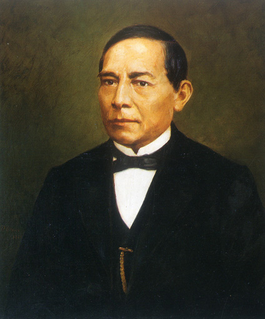 W
WBenito Pablo Juárez García was a Mexican lawyer and politician, who served as the 26th president of Mexico from 1858 until his death in 1872. He was the first president of Mexico who was of indigenous origin. Born in Oaxaca to a poor Zapotec rural family and orphaned when he was young, he moved to Oaxaca City at the age of 12 to go to school. He was aided by a lay Franciscan, and enrolled in seminary, later studying law at the Institute of Sciences and Arts and becoming a lawyer. After being appointed as a judge, in his 30s he married Margarita Maza, a socially prominent woman of Oaxaca City. From his years in college, he was active in politics. Appointed as head justice of the nation's Supreme Court, Juárez identified primarily as a Liberal politician. In his life, he wrote briefly about his indigenous heritage.
 W
WThe Lafragua law or the Regulation of the Freedom of the Press is named after liberal politician José María Lafragua (1813-1875) and issued on 28 December 1855. It is one of the many Reform laws when Mexican liberals ascended to power in 1855 after the ouster of conservative Antonio López de Santa Anna. The Lafragua law was drafted during the presidency of Ignacio Comonfort when Lafragua was his minister of the interior. The law states that no one should be persecuted for his political opinions and it prohibited press censorship. The authors of newspaper articles should be made responsible for their writings by signing them. They were not allowed abuse of the freedom of the press, especially in religious and governmental matters. It is considered the most moderate of the Reform Laws. This legislation was elevated to constitutional status by Articles 6 and 7th of the [[Constitution of 1857|Political Constitution of the United Mexican States of 1857 and reaffirmed by the Organic Law of Press Freedom 1861 issued by the Congress. In contrast, it was not accepted by conservative governments of Félix Zuloaga and Miguel Miramon, who restored the repressive Lares Law during the War of the Reform (1858–60).
 W
WJosé María Lafragua Ibarra was a Mexican liberal lawyer, politician, diplomat, and writer. He was born in Puebla, 2 April 1813, the son of Lt. Col. José María Lafragua and Mariana de Ibarra and Veytia. He served in as Minister of Interior in the government of liberal President Ignacio Comonfort. He was the first director of the National Library of Mexico and key author of the Mexican Civil and Penal Codes.
 W
WMiguel Lerdo de Tejada was a Mexican statesman, a leader of the Revolution of Ayutla, and author of the Lerdo Law, extinguishing the right of corporations, including the Roman Catholic Church and indigenous communities, from holding land.
 W
WSebastián Lerdo de Tejada y Corral was a jurist and Liberal president of Mexico, succeeding Benito Juárez who died of a heart attack in July 1872. Lerdo was elected to his own presidential term later in 1872 rather than remaining successor due to his previous office of Chief Justice of the Supreme Court. Juárez's political rival liberal General Porfirio Díaz had attempted a coup against Juárez, but his Plan de la Noria failed and Díaz was eliminated as a political foe during Lerdo's 1872-1876 term, giving Lerdo considerable leeway to pursue his program without political interference. Lerdo was more successful than Juárez in his final years as president in pacifying the country and strengthening the Mexican state. He ran for another term in 1876 and was elected, but was overthrown by Porfirio Díaz and his supporters under the Plan of Tuxtepec, which asserted the principle of no-reelection to the presidency. Lerdo died in exile in New York in 1889, but Díaz invited the return of his body to Mexico for burial with full honors. Not counting Miguel Miramón, an unrecognized president during the Reform War, he is the first president of the recognized presidents that was not born during Spanish colonial rule.
 W
WIgnacio de la Llave y Segura Zevallos was a general and the governor of the Mexican state of Veracruz (1861–1862).
 W
WIgnacio Mariscal was a Mexican liberal lawyer, politician, writer, and diplomat. He was named Secretary of Foreign Affairs in 1871–72, for the first time during the Benito Juárez administration. During the Porfirio Diaz's government, he held the office in 1880–83 and 1885–1910. In 1909, he was the President of Mexican Academy of the Language.
 W
WJosé María Luis Mora Lamadrid was a priest, lawyer, historian, politician and liberal ideologist. Considered one of the first supporters of liberalism in Mexico, he fought for the separation of church and state. Mora has been deemed "the most significant liberal spokesman for his generation [and] his thought epitomizes the structure and the predominant orientation of Mexican liberalism."
 W
WMelchor Ocampo was Mexican lawyer, scientist, and politician. A mestizo by birth and a radical liberal, he was fiercely anticlerical, perhaps an atheist, and his early writings against Roman Catholic Church in Mexico gained him a reputation as an articulate liberal ideologue. Ocampo has been considered the heir to José María Luis Mora, the premier liberal intellectual of the early republic. He served in the administration of Benito Juárez and negotiated a controversial agreement with the United States, the McLane-Ocampo Treaty. The Mexican state where his hometown of Maravatío now stands was much later renamed Michoacán de Ocampo in his honor.
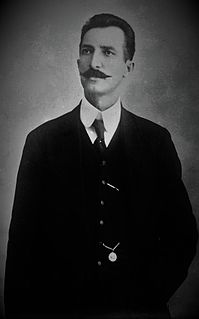 W
WJosé María Pino Suárez was a Mexican statesman, lawyer, writer and newspaper proprietor who served as the seventh and last Vice President of Mexico from 1911 until his assassination in 1913, during the events of the Ten Tragic Days, one of the most violent periods of the Mexican Revolution.
 W
WThe Plan de la Noria was a revolutionary call to arms intended to oust Mexican President Benito Juárez, who had been elected to a fourth term. Liberal General Porfirio Díaz issued it on 8 November 1871, immediately following his defeat by Juárez in the presidential election. Neither Juárez, Díaz, nor the third candidate, Sebastián Lerdo de Tejada, won a majority of votes. As a result, the Mexican Congress had to choose the victor; it was dominated by Juáristas and elected Juárez to his fourth term.
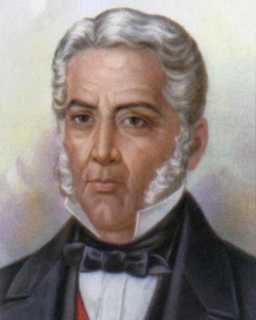 W
WThe Plan of Ayutla was the 1854 written plan aimed at removing conservative, centralist President Antonio López de Santa Anna from control of Mexico during the Second Federal Republic of Mexico period. Initially, it seemed little different than other political plans of the era, but it is considered to be the first act of the Liberal Reform in Mexico. It was the catalyst for revolts in many parts of Mexico, which led to the resignation of Santa Anna from the presidency, never to vie for office again. The next Presidents of Mexico were the liberals, Juan Álvarez, Ignacio Comonfort, and Benito Juárez. The new regime would then proclaim the 1857 Mexican Constitution, which implemented a variety of liberal reforms.
 W
WJuan Ignacio Paulino Ramírez Calzada, known as Ignacio Ramírez, was a Mexican writer, poet, journalist, lawyer, atheist, and political libertarian from San Miguel de Allende, then called San Miguel el Grande. His father had been a prominent federalist politician. In writings, Ramírez used the pen name, El Nigromante. He defended the rights of Indians. Ramírez worked with Guillermo Prieto to start the satirical periodical, Don Simplicio. Ramírez is considered a member of the "'romantic generation' of Mexican liberals" coinciding with the Liberal Reform; others were Ponciano Arriaga, Miguel Lerdo de Tejada, Melchor Ocampo, and Guillermo Prieto.
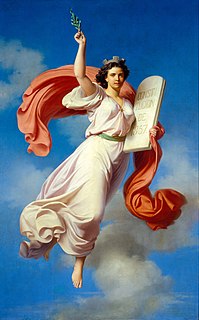 W
WThe Reform laws were a set of anticlerical laws enacted in the Second Mexican Republic between 1855 and 1863, during the governments of Juan Alvarez, Ignacio Comonfort and Benito Juárez that were intended to limit the privileges of the Roman Catholic Church and the military. The laws also limited the ability of Catholic Church and indigenous communities from collectively holding land. The liberal government sought the revenues from the disentailment of church property, which could fund the civil war against Mexican conservatives and to broaden the base of property ownership in Mexico and encouraging private enterprise. Several of them were raised to constitutional status by the constituent Congress that drafted the liberal Constitution of 1857. Although the laws had a major impact on the Catholic Church in Mexico, liberal proponents were not opposed to the church as a spiritual institution, but rather sought a secular state and a society not dominated by religion.
 W
WThe War of Reform in Mexico, was a three-year civil war lasting from December 1857 to December 1860 fought between the Liberal Party and the Conservative Party over the Constitution of 1857, promulgated under the liberal presidency of Ignacio Comonfort. The new constitution was part of a wider liberal program intended to eliminate the political, economic, and cultural power of the Catholic church; separating church and state, while also attempting at reducing the power of the Mexican Army, and economically developing the nation.
 W
WThe Plan of Ayutla was the 1854 written plan aimed at removing conservative, centralist President Antonio López de Santa Anna from control of Mexico during the Second Federal Republic of Mexico period. Initially, it seemed little different than other political plans of the era, but it is considered to be the first act of the Liberal Reform in Mexico. It was the catalyst for revolts in many parts of Mexico, which led to the resignation of Santa Anna from the presidency, never to vie for office again. The next Presidents of Mexico were the liberals, Juan Álvarez, Ignacio Comonfort, and Benito Juárez. The new regime would then proclaim the 1857 Mexican Constitution, which implemented a variety of liberal reforms.
 W
WVicente Florencio Carlos Riva Palacio Guerrero better known as Vicente Riva Palacio was a Mexican liberal politician, novelist, journalist, intellectual, and military leader.
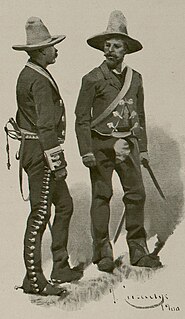 W
WIn Mexico, the term Rurales (Spanish) is used in respect of two armed government forces. The historic Guardia Rural was a rural mounted police force, founded by President Benito Juárez in 1861 and expanded by President Porfirio Díaz. It served as an effective force of repression and a counterweight to the Mexican Army during the nineteenth and early twentieth centuries. The rurales were dissolved during the Mexican Revolution.
 W
WPedro Sáinz de Baranda y Borreiro was a Naval Officer, Industrialist and Liberal Politician who served in the Spanish Navy and, having participated in the Mexican War of Independence, is credited with founding the Mexican Navy. During 1835, he served on two occasions as Governor of Yucatán. As an entrepreneur, he founded the first completely mechanized textile factory to use steam-power successfully in Mexico; he is widely regarded as having introduced the Industrial Revolution to the country.
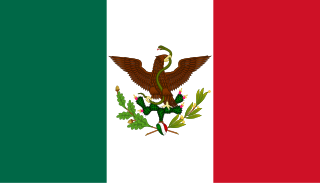 W
WThe Second Federal Republic of Mexico is the name given to the second attempt to achieve a federalist government in Mexico after a period of centralism. Officially called the United Mexican States, a federal republic was established again on August 22, 1846 when interim president José Mariano Salas issued a decree restoring the 1824 constitution. The Second Republic continued to be rocked by the political instability that had characterized Mexico since independence. Mexico's loss in the war with the United States during this time saw half of Mexican territory become part of the United States.
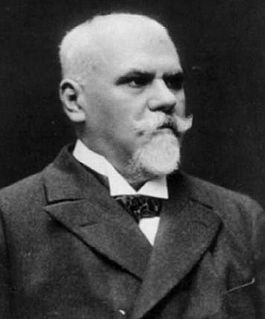 W
WJusto Sierra Méndez, was a prominent liberal Mexican writer, historian, journalist, poet and political figure during the Porfiriato, in the second half of the nineteenth century and early twentieth century. He was a leading voice of the Científicos, "the scientists" who were the intellectual leaders during the regime of Porfirio Díaz.
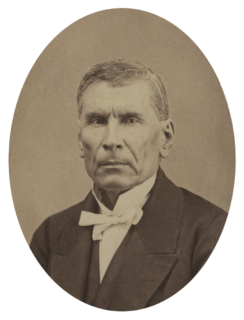 W
WJosé Santiago Vidaurri Valdez was a controversial and powerful governor of the Mexican states of Nuevo León and Coahuila between 1855 and 1864. He was an advocate of states' rights. In 1861, he sought an association with the Confederate States of America, which benefited his region economically. Earlier in 1855, he had been a supporter of the Revolution of Ayutla, which brought liberals to power. Vidaurri supported Benito Juárez in the War of the Reform. He later broke with Juárez and supported Emperor Maximilian I of Mexico. When the French regime fell in 1867, Vidaurri was captured and executed for his alliance with the French. In Nuevo León he remains an important historical figure.
 W
WIgnacio Zaragoza Seguín was a Mexican general and politician. He led the Mexican army 600 men that defeated 6,500 invading French forces the elite French legionnaires at the Battle of Puebla on May 5, 1862.